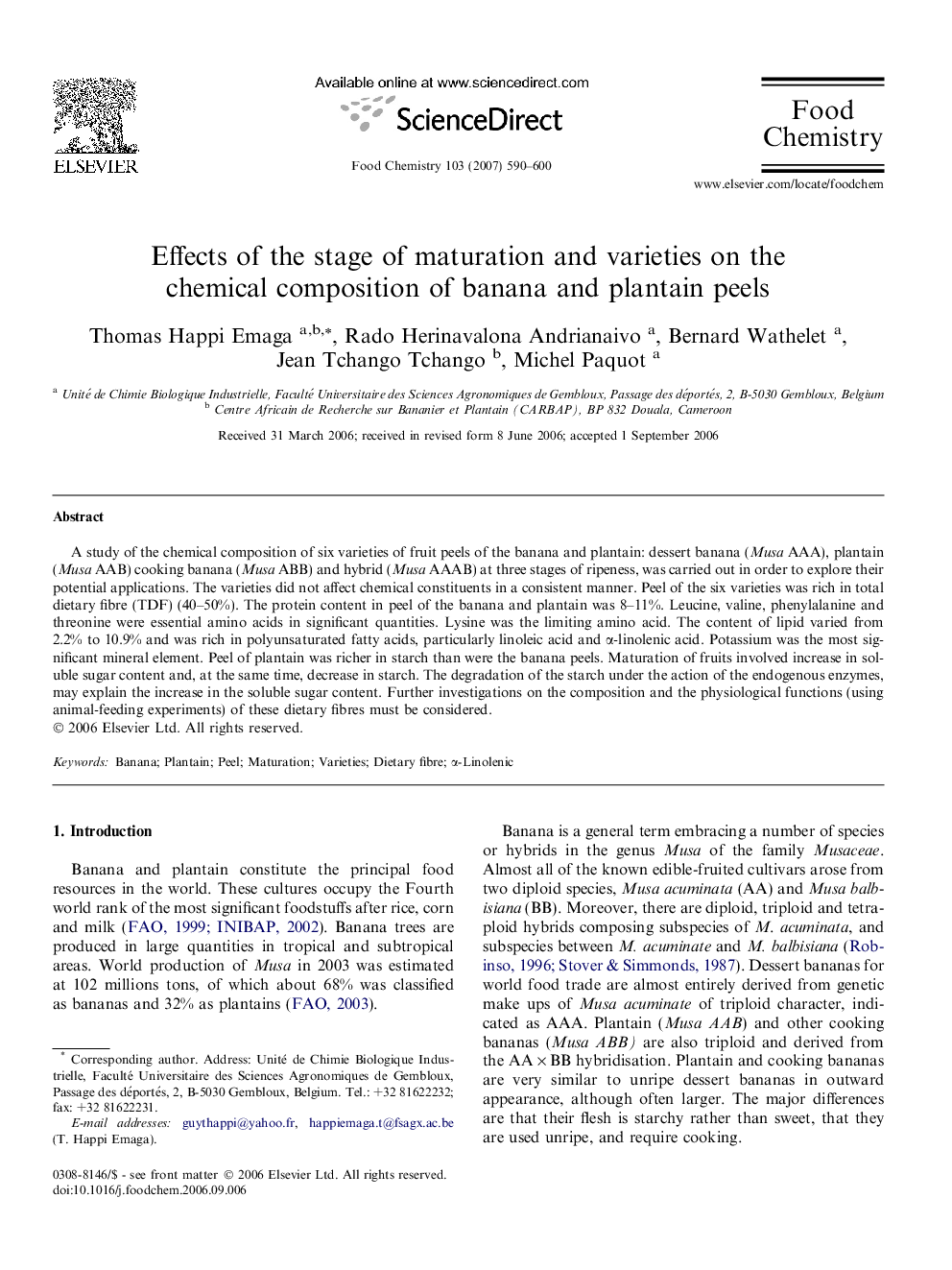| Article ID | Journal | Published Year | Pages | File Type |
|---|---|---|---|---|
| 1190626 | Food Chemistry | 2007 | 11 Pages |
A study of the chemical composition of six varieties of fruit peels of the banana and plantain: dessert banana (Musa AAA), plantain (Musa AAB) cooking banana (Musa ABB) and hybrid (Musa AAAB) at three stages of ripeness, was carried out in order to explore their potential applications. The varieties did not affect chemical constituents in a consistent manner. Peel of the six varieties was rich in total dietary fibre (TDF) (40–50%). The protein content in peel of the banana and plantain was 8–11%. Leucine, valine, phenylalanine and threonine were essential amino acids in significant quantities. Lysine was the limiting amino acid. The content of lipid varied from 2.2% to 10.9% and was rich in polyunsaturated fatty acids, particularly linoleic acid and α-linolenic acid. Potassium was the most significant mineral element. Peel of plantain was richer in starch than were the banana peels. Maturation of fruits involved increase in soluble sugar content and, at the same time, decrease in starch. The degradation of the starch under the action of the endogenous enzymes, may explain the increase in the soluble sugar content. Further investigations on the composition and the physiological functions (using animal-feeding experiments) of these dietary fibres must be considered.
